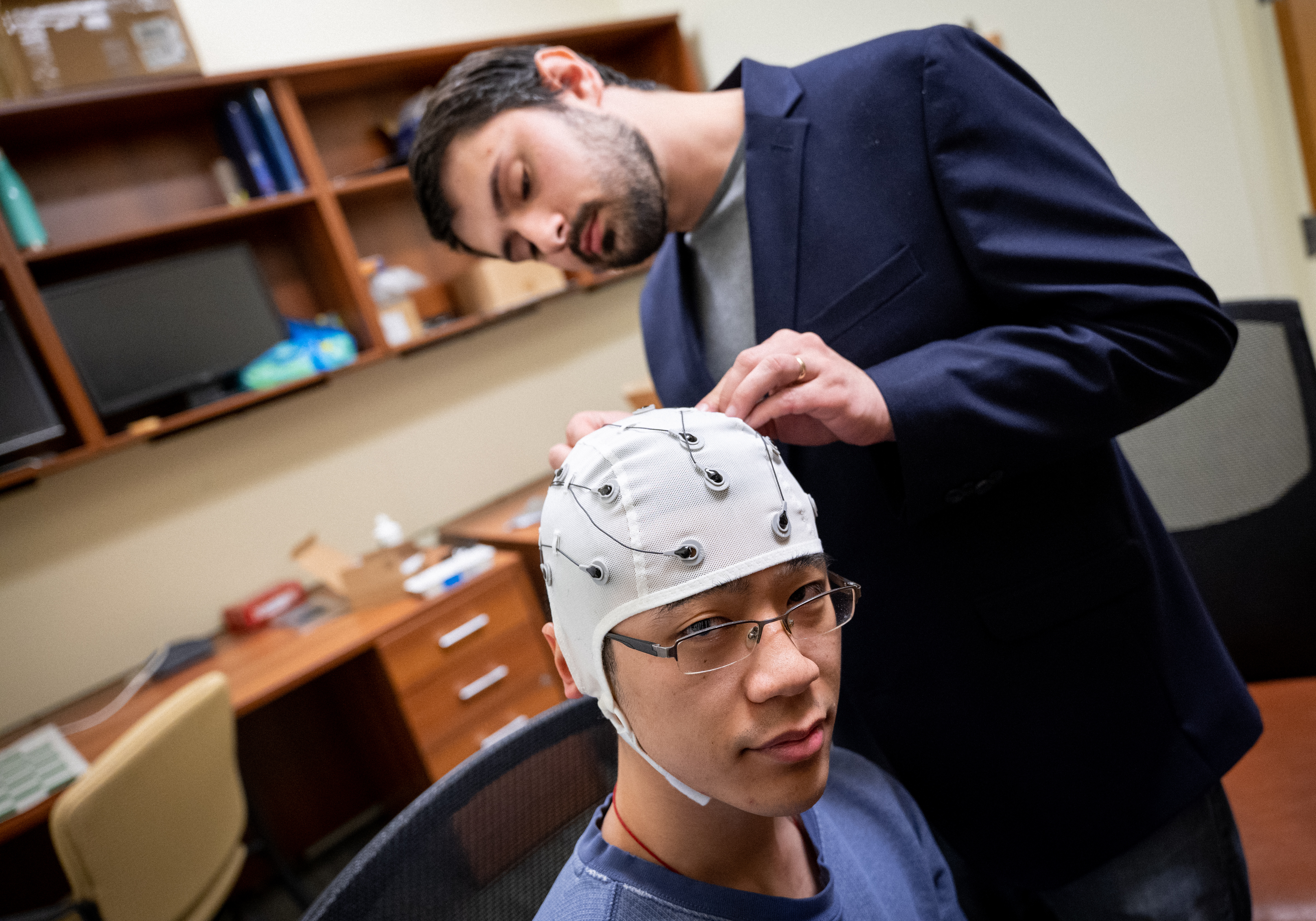Todd Braver, professor of psychological and brain sciences, and ShiNung Ching, associate professor of electrical and systems engineering, have received a grant from the National Institutes of Health (NIH) for more than $400,000 to investigate a new way to improve thinking and focus — work that could one day help restore short-term memory in older adults and give a boost to others who struggle with memory and concentration.

The new project uses a computer model of brain activity called MINDy (Mesoscale Individualized NeuroDynamic model). Developed in a prior collaboration between the Braver and Ching labs in 2020, MINDy uses neuroimaging measures, including functional magnetic resonance imaging (fMRI) and electroencephalogram (EEG) data, to develop individual-specific estimates of brain activity. For the current project, the researchers will rely on EEG, a simple measurement of brain activity conducted through electrodes attached to the scalp. Based on that data, researchers will use different electrodes to deliver tiny electric pulses to the brain to encourage an active, productive state of mind.
With guidance from MINDy, researchers hope to individually tailor these pulses to achieve the desired results, Braver said. “By modeling a person’s brain activity, we should be able to directly customize the stimulation they need to achieve a target brain state,” Braver said. “If it works, it’s going to be a huge advance.”
Researchers and even some self-experimentalists have been exploring the possibilities of electric brain stimulation for years, but until now the approach has been largely haphazard, Braver said.
“You can make an educated guess that if you apply stimulation in this brain area, it’s going to have this effect,” he said. “But with the MINDy platform, we’re trying to directly predict how brain stimulation will affect the dynamics of brain activity. We hope that this will substantially improve the precision and enhancement effects of the stimulation.”
Matthew Singh, a postdoctoral research fellow co-supervised by Braver and Ching, provided the validation for MINDy and played a large role in the project design. He noted that the approach is subtle and painless — far from the “shock therapy” that some people might imagine. Singh and other members of the lab even tested the system on themselves just to make sure it doesn’t cause discomfort.
The electrical impulses “won’t force the brain to do anything,” he said. “Our goal is to nudge it in just the right direction.”
Many people could use help improving attention and focus, Singh said, and the research could ultimately aid older adults with age-related memory loss. “There’s hope that this sort of treatment could restore their short-term memory capacity to where it was a decade earlier.”
In the near future, the researchers intend to recruit approximately 60 healthy subjects to test MINDy. That group could potentially include WashU students, but Singh said he hopes to involve a variety of people from the St. Louis area. “We want to study a diverse and representative sample to better determine the degree to which our observations will generalize to different populations,” he said.
Singh said Ching’s expertise in neuroengineering was crucial to making MINDy a reality. “We’re grateful for the large neuroscience community at WashU,” he said. “It extends far beyond the biology and psychological and brain science departments. That’s definitely been a great resource for us.”
The Braver lab is a particular hub of cross-disciplinary research. Braver — along with Ron Mallon, professor of philosophy; Diana Parra Perez, research assistant professor in the Brown School; and Erik Dane, associate professor of organizational behavior in the Olin Business School — is one of the leaders of Mindfulness Science and Practice, a research cluster funded through the Incubator for Transdisciplinary Futures. Braver said that the new MINDy-based approach could also help advance mindfulness research. “Neurostimulation and mindfulness fit very well together as complementary and synergistic techniques to enhance attentional focus,” he said.



